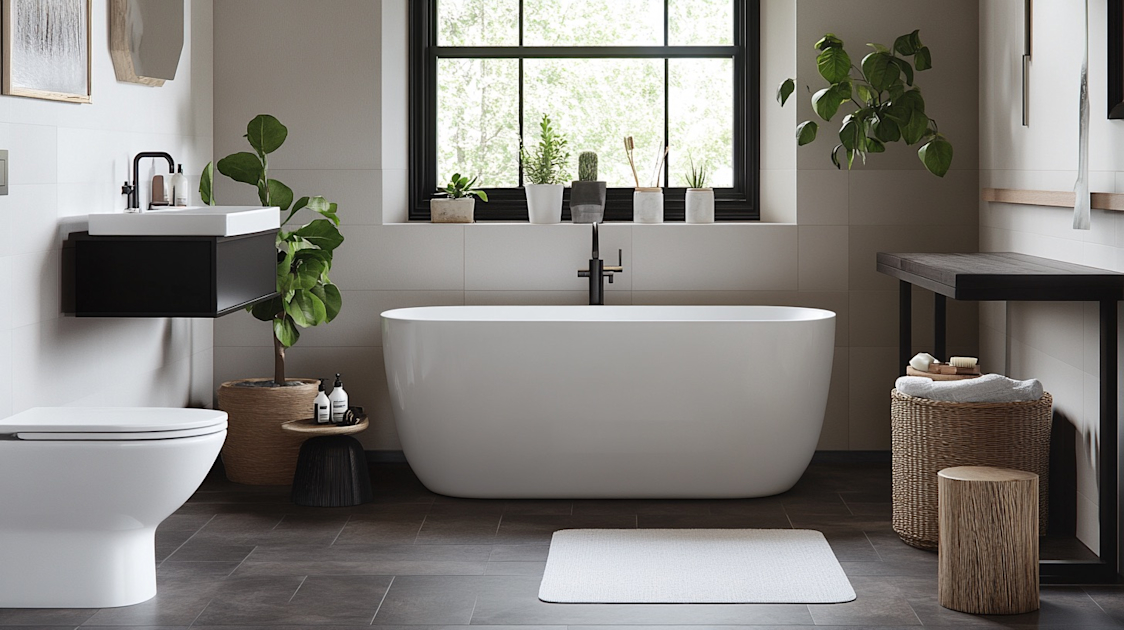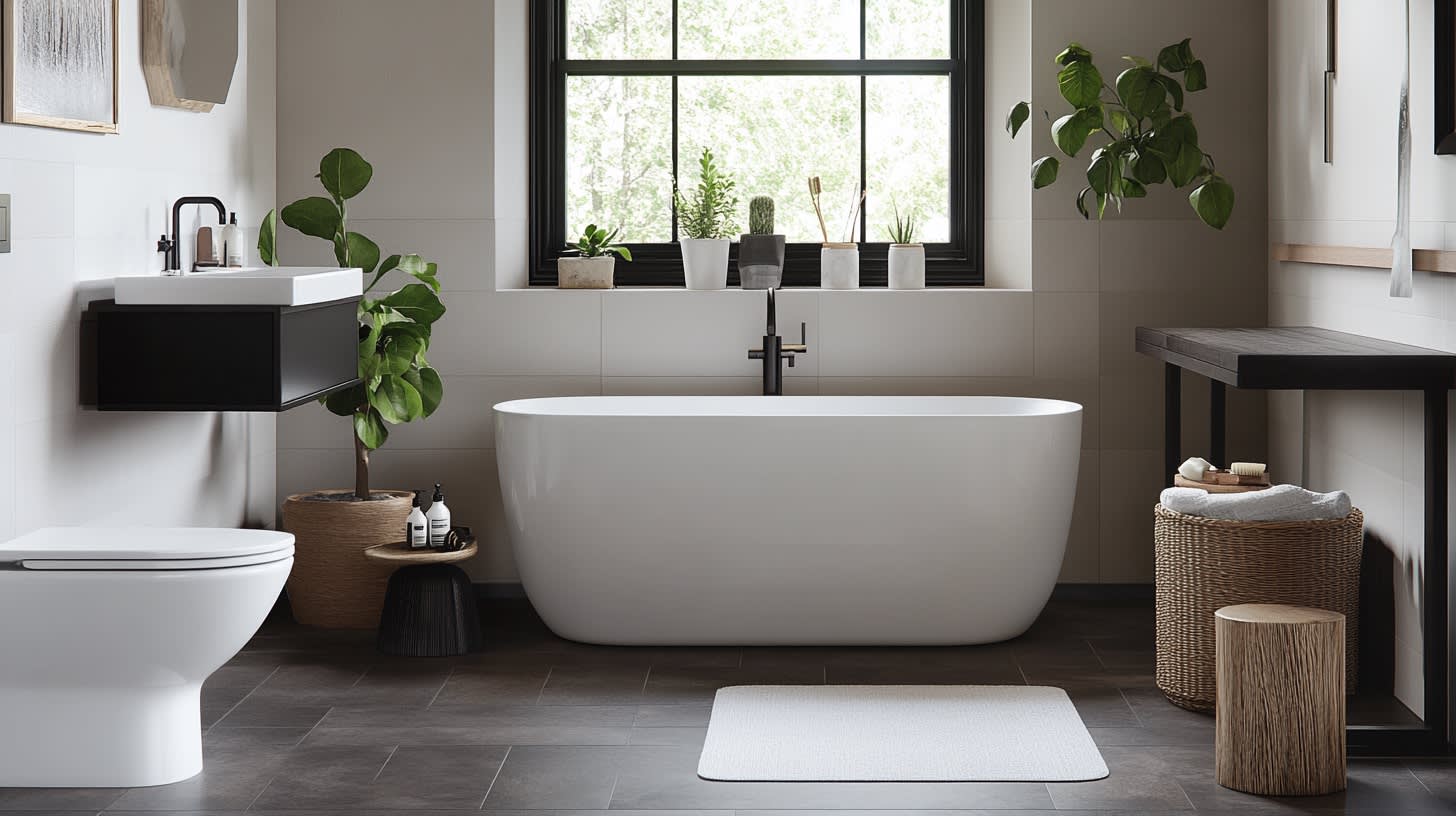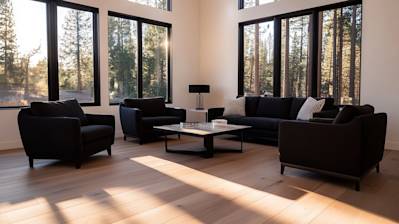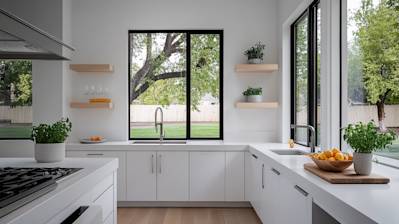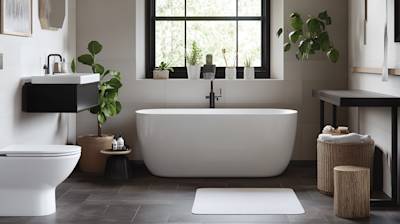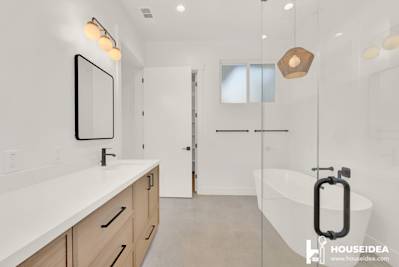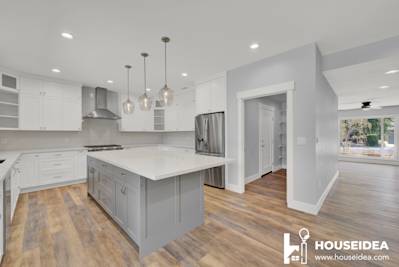Bathroom tile selection is an essential part of bathroom renovation and design. Quality tiles can provide both functionality and aesthetic appeal, transforming your bathroom space into a contemporary oasis or a charming vintage-style paradise. This article will delve deep into the world of bathroom tiles and offer an in-depth guide on choosing the right tiles for your interior design project.
Different Types of Bathroom Tiles
Understanding the types of bathroom tiles available in the market can help you make choices that align with your design preference, functionality needs, and budget. Here are the main types of tiles you can consider:
- Ceramic Tiles: Porous and less resistant to water, ceramic tiles are an economical choice.
- Porcelain Tiles: These are denser, more water-resistant, and durable than ceramic tiles, making them suitable for bathrooms.
- Glass Tiles: Though more expensive, glass tiles can create fascinating reflections and open up your bathroom space.
- Stone Tiles: Such as marble, granite and slate. These are aesthetically appealing but require more maintenance.
- Vinyl Tiles: The most inexpensive and easy to install option suitable for DIY enthusiasts.
Understanding Bathroom Tile Sizes: Which One Is Best?
While tastes differ, the tile size can majorly influence the appearance and functionality of your bathroom. Some popular tile sizes for bathrooms include:
- Small tiles (1”x1” up to 4”x4”): Ideal for adding detail or for use on curved surfaces such as shower pans.
- Medium tiles (4”x4” up to 12”x12”): These are versatile and can work in varied spaces, from shower walls to bathroom floors.
- Large tiles (12”x24”, 18”x18” and up): Excellent for larger bathrooms, adding an expansive feel.
Top Bathroom Tiles Trends 2025
Stay ahead of the curve with the latest tile designs and materials, which combine beauty and durability.
- Geometric Tiles: Unique shapes like hexagons and triangles are making a strong statement this year.
- Large Format Tiles: These tiles give an elegant, modern feel to your bathroom, minimizing grout lines.
- Textured Tiles: Tiles with raised or indented patterns add depth and interest to a bathroom.
- Neutral Tiles: Soft grey, beige, and white shades remain in trend for creating calming, spa-like bathrooms.
- Black Bathroom Tiles: Black adds a sleek, edgy feel to a modern bathroom design.
Essential Tips for Choosing Your Bathroom Tiles
It's crucial to consider some factors before making your final choice. Here are some practical tips for choosing bathroom tiles:
- Consider the Size of Your Bathroom: The size of your bathroom can dictate tile size. For instance, larger tiles can make a small bathroom appear larger.
- Think About Maintenance: Some tiles, such as stone tiles, require more maintenance. If you want an easy-care option, porcelain or ceramic tiles might be preferable.
- Mix and Match with Care: Mixing different types or sizes of tiles can create a unique effect, but be careful not to overdo it.
- Factor in Your Home’s Overall Style: Make sure your choice compliments the overall style of your home.
How to Install Bathroom Tiles
Once you've chosen your bathroom tiles, it's time to install them. The installation process involves the following steps:
- Measure your bathroom and plan out the tiling.
- Prepare the surface by ensuring it's clean and flat.
- Apply the adhesive and start placing the tiles.
- Allow the adhesive to dry before applying the grout.
- Clean the tiles after the grout has dried.
It's crucial to consider hiring professionals, as DIY bathroom tile installation can be a complex task.
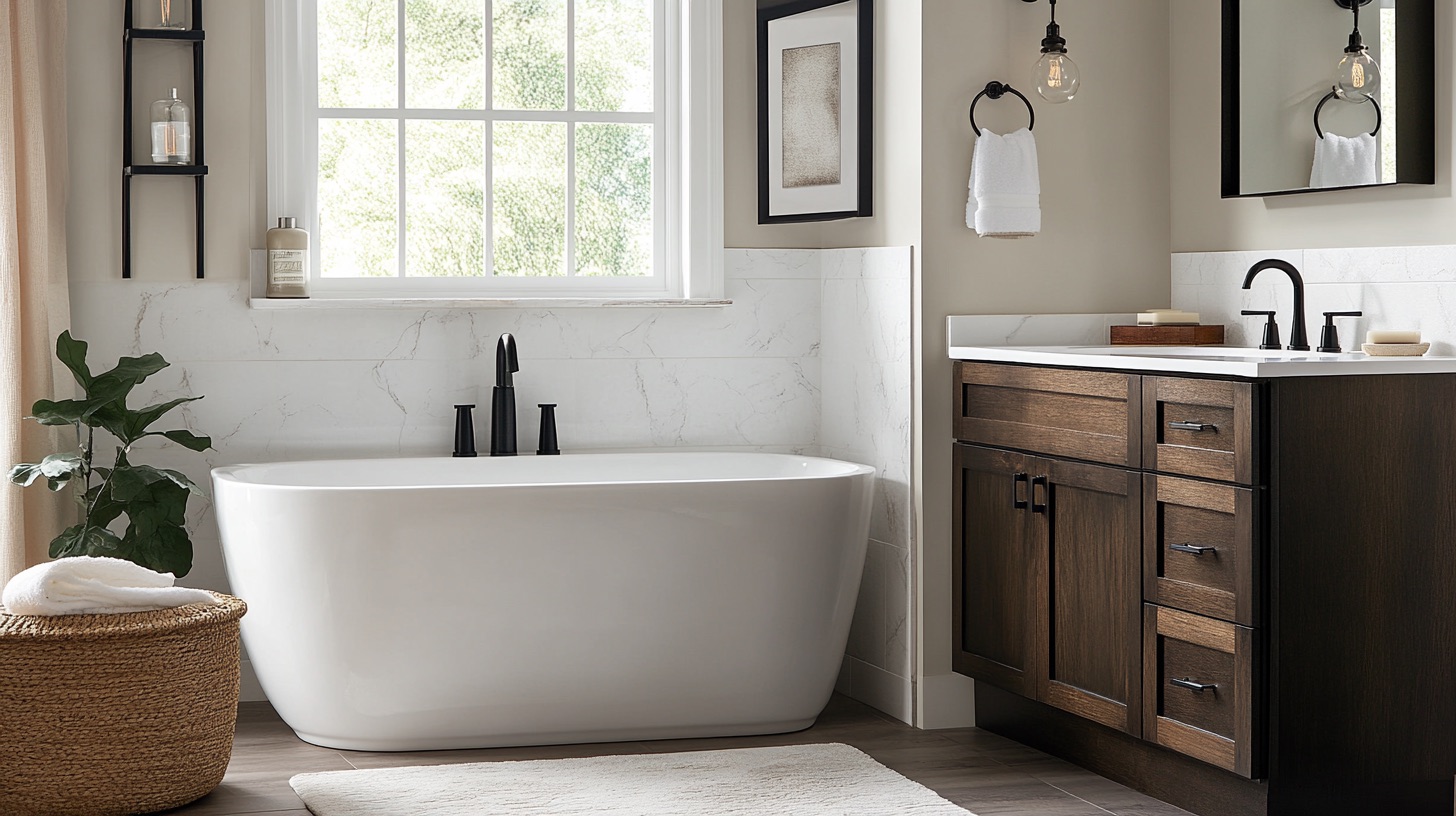
Frequently Asked Questions about Bathroom Tile
What types of bathroom tiles are available?
There are several types of bathroom tiles available in the market. They include porcelain tiles, ceramic tiles, vinyl tiles, stone tiles, glass tiles, and mosaic tiles among others. Each type has its own unique characteristics and advantages. It's important to choose a type that suits your personal needs and preferences.
How do I choose the right bathroom tile?
Choosing the right bathroom tile depends on a few factors. These include the size of your bathroom, the overall design and theme, your budget, and your personal preferences. Other factors to consider are the tile's durability, ease of maintenance, water resistance, and safety (e.g., non-slip).
What size should my bathroom tiles be?
Bathroom tile sizes vary greatly, and there's no one-size-fits-all answer to this. However, small bathroom tiles can make a small space look larger, while larger bathroom tiles can create less grout lines creating a more seamless appearance. It's a good idea to consult with a bathroom designer or your tile supplier for advice.
Can I use floor tiles on the walls?
Yes, you can use floor tiles on your bathroom walls. In fact, it's quite common in bathroom designs. Floor tiles are typically thicker and heavier than wall tiles, which make them more durable and ideal for high-traffic or wet areas.
Can I mix and match different types of bathroom tiles?
Absolutely. Mixing and matching different types of bathroom tiles can create a unique look and feel for your space. For example, you could use ceramic tiles for the walls and then a stone tile for the floor. Just remember to balance colors and patterns to avoid making the space look too busy or cluttered.
How do I clean bathroom tiles?
Bathroom tiles are generally easy to clean. For daily maintenance, you can simply wipe them down with warm water and a soft cloth. For deeper cleaning, you can use a mild, non-abrasive cleaner. Always avoid harsh chemicals as these can damage the tile surface.
Is there a trend for bathroom tiles I should be aware of?
Trends for bathroom tiles constantly change with time. Currently, large format bathroom tiles, geometric patterns, as well as matte and neutral finishes are very popular. However, the key is to choose a style that you truly love and one that will stand the test of time.
Can I install bathroom tiles by myself?
It's definitely possible to install bathroom tiles by yourself if you're handy and have the right tools. However, if you're not confident or experienced, it may be best to hire a professional to ensure the best result. Tiling can be a complex process involving precise measurements, and mistakes can be costly to rectify.
What can I do to make my bathroom tiles last longer?
To make your bathroom tiles last longer, regular cleaning and maintenance are crucial. This includes wiping up spills immediately, regularly cleaning grout, and sealing tiles if necessary. Additionally, avoid using harsh cleaning agents that can damage the surface of the tiles.
Do I need to seal bathroom tiles?
Whether you need to seal your bathroom tiles or not entirely depends on the type of tile you choose. Porcelain, for example, is less porous and may not require sealing, whereas natural stone and some types of ceramic might. Always check with your tile supplier if in doubt.
Can bathroom tiles be painted over?
Yes, bathroom tiles can be painted over, but the process requires special preparation and materials. Also, note that painted tiles may not be as durable or water-resistant as original glazed tiles. It's often easier and more cost-effective in the long run to replace dated or damaged tiles instead of painting over them.
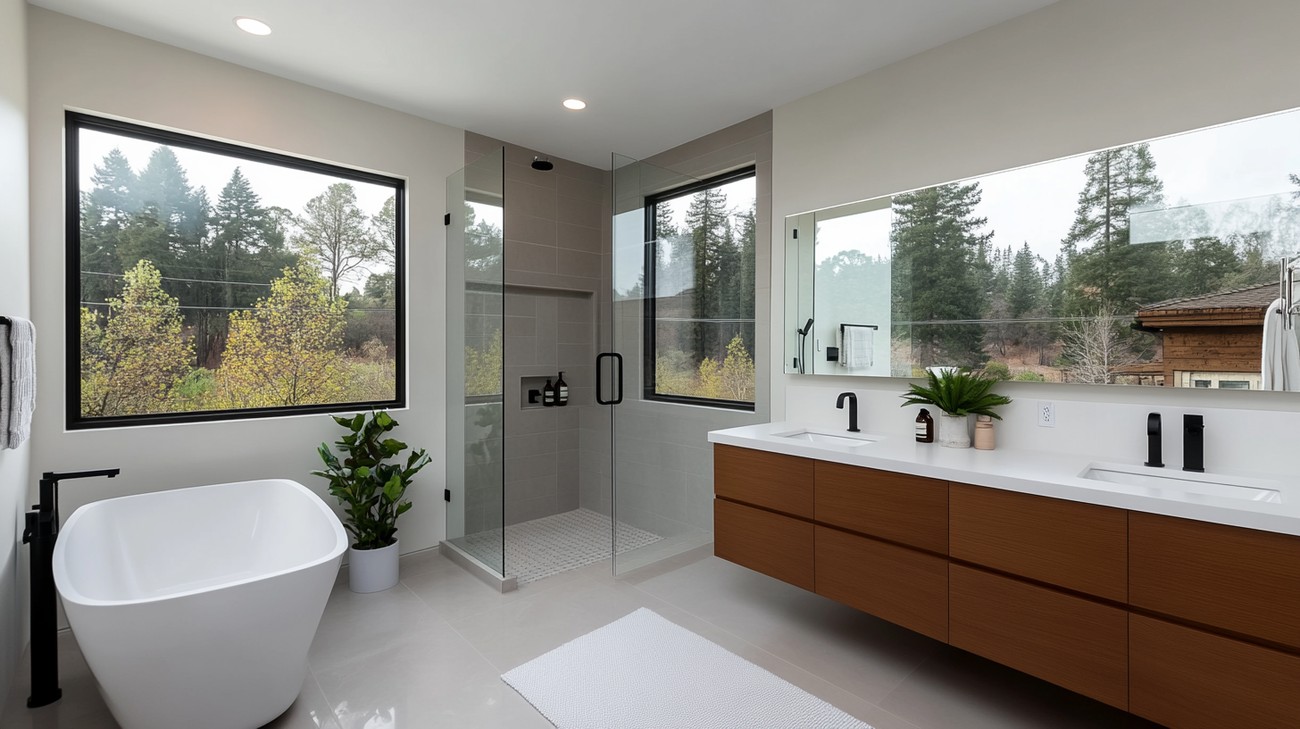
Pros of Bathroom Tile
Durability and Longevity
One of the most significant advantages of using bathroom tiles is their durability. They are extremely tough and can withstand heavy foot traffic, as well as exposure to water and moisture, without getting damaged. If installed correctly, a high-quality bathroom tile can last for decades, making it a very cost-effective choice in the long run.
Easy to Maintain
Bathroom tiles are exceptionally easy to clean and maintain. They can quickly be wiped down with a damp cloth, a mop, or with specific tile cleaners available in the market. They are resistant to stains, and stubborn spots can often be removed using standard domestic cleaning products.
Versatility of Design
Bathroom tiles come in a wide range of styles, colors, sizes, shapes, and textures. With such versatility, homeowners can create a unique bathroom design that fits their personal style and complements the overall decoration of their homes. Whether you prefer a traditional or a contemporary look, you will surely find a tile that suits your taste.
Customization
When it comes to bathroom tiles, the possibilities for customization are practically endless. You can mix and match different types of tiles to create a pattern, or use special feature tiles to highlight certain areas. This level of customization can help you create a unique and highly personalized bathroom design.
Water and Humidity Resistance
Bathroom tiles are specifically designed to resist water, and they are not easily impacted by the humidity usually found in bathrooms. They are an ideal choice for areas that are often wet, such as showers, and they can help prevent the growth of mold and mildew.
Cons of Bathroom Tile
Installation
Installing bathroom tiles can be intricate and time-consuming. It requires a lot of skill and experience to ensure the tiles are correctly installed. Improper installation can lead to numerous problems, like uneven surface, loose tiles, and water leakage. Not to mention, professional installation services can be quite expensive.
Comfort and Warmth
Unlike other types of flooring, bathroom tiles can feel cold and hard underfoot. This can be uncomfortable, particularly during the colder months. Although you can use floor rugs or heating installations to counter this, these solutions could add to the overall cost.
Slippery
When wet, certain types of tiles can become very slippery, which can pose a safety risk, especially in a bathroom setting. To reduce this risk, you can opt for tiles with a textured or matte finish, but these may not always align with your design preference.
Cost
High-quality bathroom tiles can be expensive. The overall cost could significantly increase, particularly if you opt for luxury materials or unique designs. Additionally, installation, maintenance, and potential repair costs should also be considered.
Grout Maintenance
Although tiles themselves are easy to maintain, cleaning grout can be a challenge. Grout is prone to staining and darkening over time, which can affect the overall appearance of your bathroom. Sealing the grout and regular cleaning can help prevent this, but it requires extra effort and maintenance.

Myths and Misconceptions About Bathroom Tiles
Bathroom tiles form a crucial part of our bathrooms, offering functional benefits along with enhancing the aesthetics. Despite this, there are several myths and misconceptions surrounding bathroom tiles that can often lead us astray. This article will attempt to debunk and clarify some of these misconceptions.
Myth 1: All Tiles are Waterproof
Fact
One of the common misconceptions about bathroom tiles is that all of them are inherently waterproof. This is not entirely true. While most ceramic and porcelain tiles are highly water-resistant due to their low absorption rates, they are not entirely waterproof. There is a possibility of water seeping into their microscopic pores over time which can cause them to deteriorate. To enhance their waterproof capabilities, bathroom tiles often need to be sealed.
Myth 2: Tiles are Resistant to All Kinds of Damage
Fact
Another widespread myth is that tiles are invincible, resistant to all kinds of damage. Though tiles are hard-wearing and long-lasting, they are not indestructible. Poorly-installed tiles, low-quality materials, or heavy impacts can cause chips, cracks, or complete tile failure. Additionally, certain tile materials can be susceptible to damage from harsh cleaning materials.
Myth 3: Bigger Tiles Make Your Bathroom Look Bigger
Fact
While it's true that bigger tiles have fewer grout lines, leading to a more seamless and spacious look, this does not always apply. The room shape, color scheme, and even the tile pattern can determine how big or small your bathroom appears. Sometimes, using smaller tiles can make a bathroom seem larger due to the increased number of grout lines creating a detailed pattern that attracts the eye.
Myth 4: Grout Never Needs Replacement
Fact
Grout is an essential component that binds tiles together, providing strength and preventing water from seeping beneath the tiles. However, despite its durability, grout is not immune to wear and tear. Continuous exposure to moisture can make the grout weak and brittle over time, leading to cracks. Discolored or failing grout can be a sign that it needs replacement.
Myth 5: All Tiles are Slip-Resistant
Fact
This is one of the most dangerous misconceptions. Not all tiles are slip-resistant, and the finish of some tiles may become extremely slippery when wet, posing a significant safety risk. It's crucial to ensure the tiles chosen for bathroom floors have a suitable slip-resistance rating or anti-slip properties.
Myth 6: Natural Stone Tiles are Maintenance Free
Fact
While natural stone tiles lend an exquisite, high-end look to a bathroom, they are not maintenance-free. Unlike ceramic or porcelain tiles, natural stone is porous and can absorb water, leading to potential staining or damage. They require regular sealing to ensure their longevity and preserve their natural beauty.
Myth 7: DIY Tile Installation is Easy
Fact
Many people are under the misconception that laying bathroom tiles is a straightforward DIY project. While it may seem simple on the surface, tile installation requires precision, expert knowledge, and the right tools. Inappropriate preparation or incorrect installation can lead to numerous issues like cracked tiles, uneven surfaces, or water leakage down the line.
Myth 8: Dark Tiles Make a Room Appear Smaller
Fact
Many believe that using dark tiles will make their bathroom look cramped and small. However, this is not necessarily true. Dark tiles can actually add depth to a space and, when used correctly, can make a room appear larger.
With these common myths and misconceptions about bathroom tiles debunked, it becomes easier to make informed decisions when it comes to bathroom renovation and design. Remember, the more accurately informed you are about bathroom tiles, the more likely you are to choose the right tile that satisfies your specific needs and preferences.
Summary
So, if you're planning on refreshing your bathroom space, remember, a change in bathroom tile can give the whole room a new look. Whether you opt for marble, ceramic, or even pebbles, make certain you choose a durable and water-resistant type that suits your personal style. Keep in mind, too, that having a good tile layout plan can help avoid common sources of frustration in any bathroom renovation work.
Bathroom tile can reflect who you are. Choosing a colorful mosaic pattern for a vibrant, artistic feel, or a neutral beige to go with a minimalist aesthetic can make all the difference. And remember, it's not just about looks - your choice of bathroom tile can also help in maintaining cleanliness and hygiene. Tiles that are easy to clean and have fewer grout lines may save you time in the long run.
We've discussed how essential the right bathroom tile is. However, we should not forget that glue and grout also play a vital role. With suitable materials and proper installation, your bathroom can gain a sense of uniqueness, making it a more inviting and relaxing space. Bathroom renovations can often feel daunting - but when it comes to tile selection, use this opportunity to channel your creative side and create a space that truly feels like home.
About HouseIdea
HouseIdea, based in sunny Sacramento, CA, is your go-to destination for all things home improvement. We are a tight-knit, hardworking team with a knack for transforming house spaces into dream places. Whether you're looking to refurbish your kitchen, create a tranquil outdoor living space, or give your bathroom a modern makeover, we've got you covered. What began as a humble local startup has grown into a trusted and credible home improvement company. HouseIdea is passionate about delivering top-notch, personalized services and fostering lasting relationships with our customers. It's our way of reshaping homes, one idea at a time.
Tags: shower tile, tile installation, tile design,

